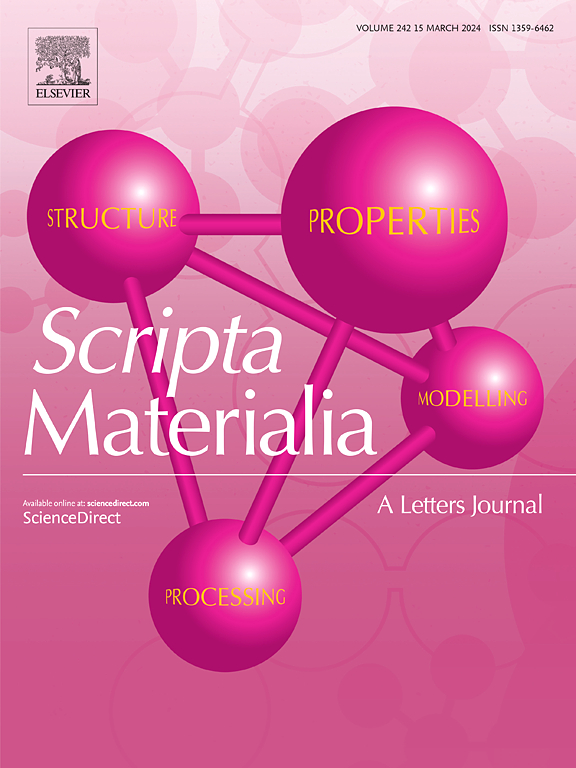含ru BCC-B2高温合金的凝固行为及开裂机理
IF 5.3
2区 材料科学
Q2 MATERIALS SCIENCE, MULTIDISCIPLINARY
引用次数: 0
摘要
许多沉淀强化合金在增材制造(AM)过程中极易开裂,这通常需要调整成分来缓解。最近,有研究表明,当温度超过1200℃时,含ru有序的B2析出物可以对难熔BCC合金进行析出强化。这激发了对四元和五元难熔BCC-B2合金单轨激光增材制造潜力的研究。大于9at的合金。% Ru在冷却时出现裂纹形成。所有含锆合金均出现了凝固裂纹,用Hf替代可减轻凝固裂纹。从合金的固相、液相和分配系数的特征可以看出,这种开裂是由于凝固过程中Zr的强分配造成的。Hf5Ru4-Nb63V28具有高的B2溶解度(>1300℃)和高的固相(1695℃)以及高的抗裂性,是一种很有前途的BCC-B2组合物。本文章由计算机程序翻译,如有差异,请以英文原文为准。

Solidification behavior and cracking mechanisms of Ru-containing BCC-B2 superalloys
Many precipitation-strengthened alloys are highly susceptible to cracking during additive manufacturing (AM), which often requires compositional adjustments to mitigate. Recently, it has been demonstrated that refractory BCC alloys can be precipitation strengthened with ordered Ru-containing B2 precipitates to temperatures exceeding 1200 °C. This motivates a study of the potential fabricability of quaternary and quinary refractory BCC-B2 alloys by AM using single track laser experiments. Alloys with greater than 9 at.% Ru exhibit crack formation upon cooling. Solidification cracking was observed in all Zr-containing alloys, which can be mitigated by substituting Hf. This cracking is attributed to the strong partitioning of Zr during solidification, as revealed by characterization of alloy solidus, liquidus, and partition coefficients. Hf5Ru4-Nb63V28 is identified as a promising BCC-B2 composition with a high B2 solvus (>1300 °C) and solidus (1695 °C) along with a high resistance to cracking.
求助全文
通过发布文献求助,成功后即可免费获取论文全文。
去求助
来源期刊

Scripta Materialia
工程技术-材料科学:综合
CiteScore
11.40
自引率
5.00%
发文量
581
审稿时长
34 days
期刊介绍:
Scripta Materialia is a LETTERS journal of Acta Materialia, providing a forum for the rapid publication of short communications on the relationship between the structure and the properties of inorganic materials. The emphasis is on originality rather than incremental research. Short reports on the development of materials with novel or substantially improved properties are also welcomed. Emphasis is on either the functional or mechanical behavior of metals, ceramics and semiconductors at all length scales.
 求助内容:
求助内容: 应助结果提醒方式:
应助结果提醒方式:


